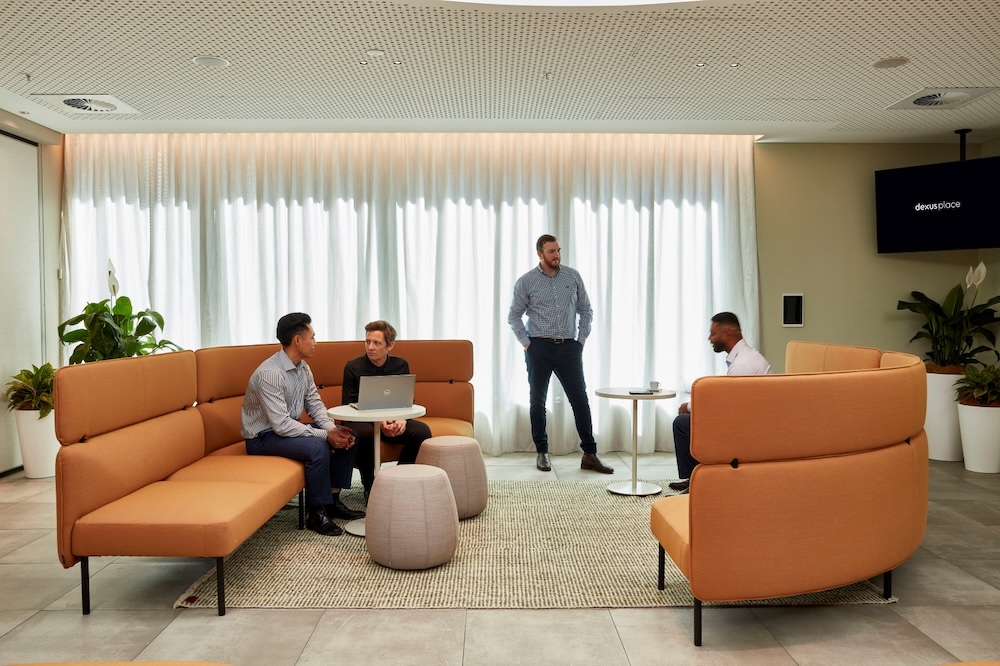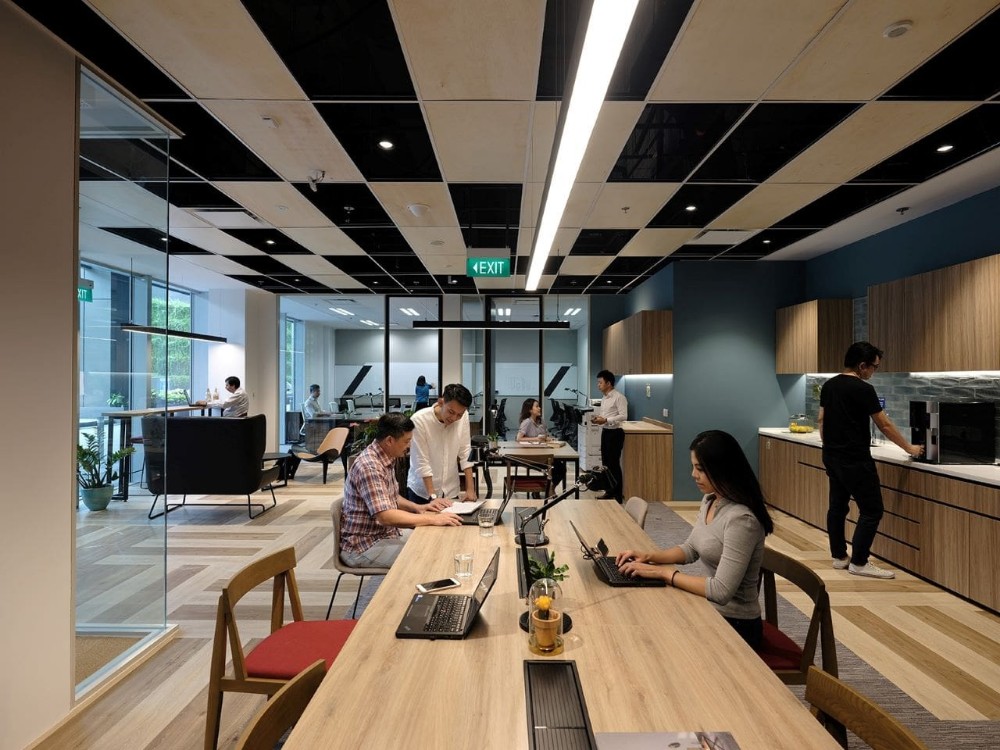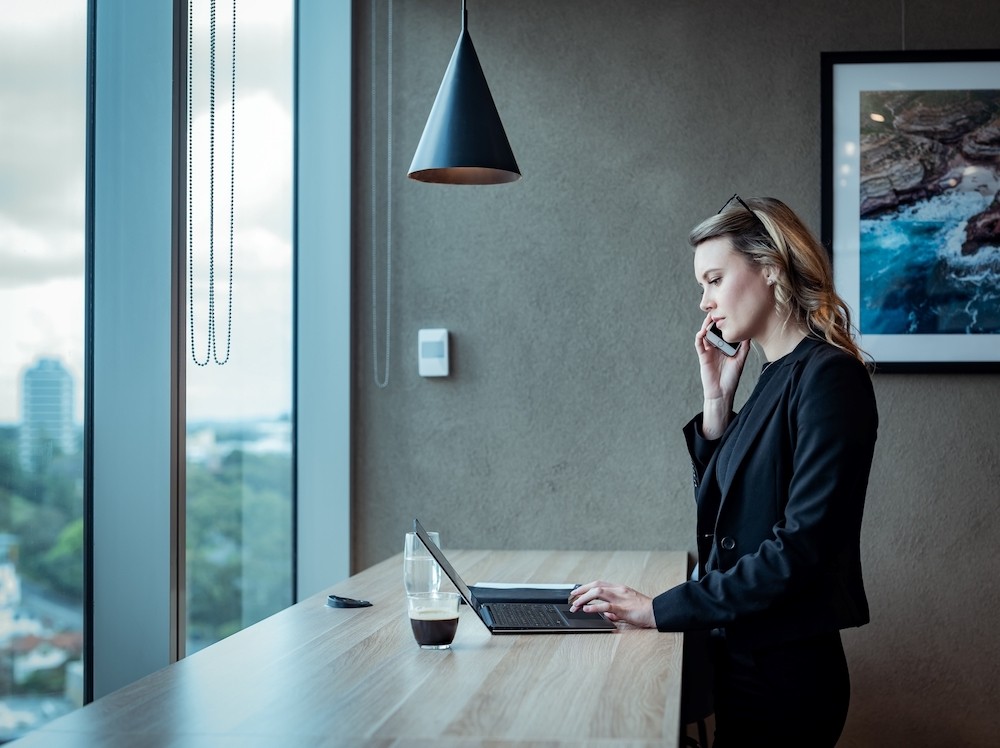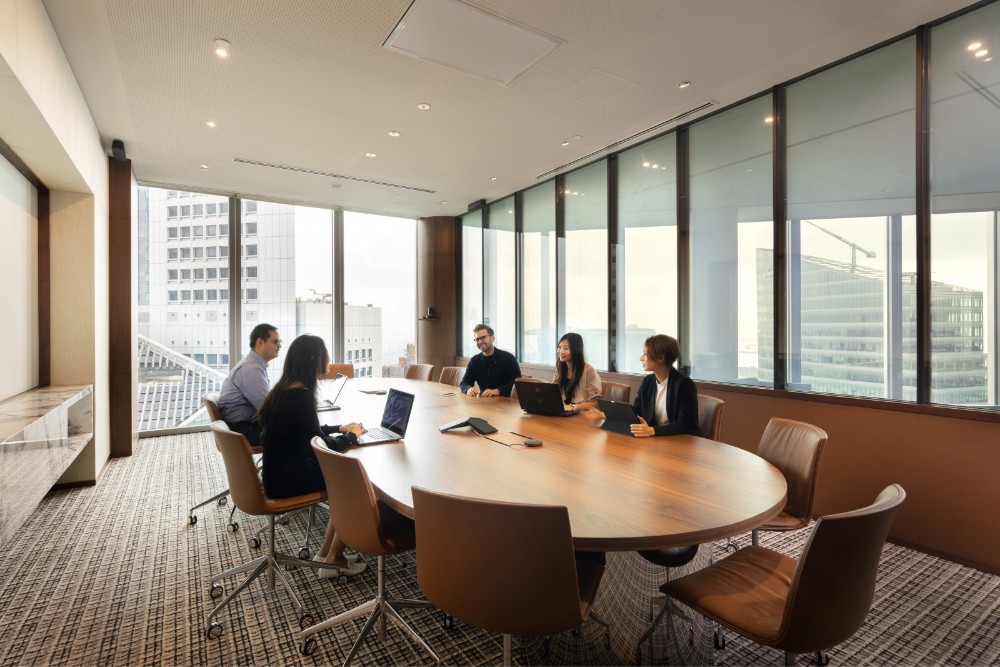Collaboration is no longer confined to scheduled meetings or designated teamwork hours. In the modern workplace, it happens across informal chats, impromptu huddles, shared screens, and even quiet brainstorming zones. Designing an office that supports these moments isn't just about aesthetics — it's about creating a functional layout that reflects how your team works best together.
A well-planned office layout does more than house desks and meeting rooms. It plays an active role in shaping behaviour, encouraging communication, and fostering innovation. In this guide, we explore how to create the best office layout for collaboration, combining strategic design with the flexibility of today’s work culture.
Why Collaborative Design Matters More Than Ever
As hybrid models, flexible schedules, and cross-functional teams become standard, the office has evolved into more than just a workspace. It's a cultural and strategic tool.
The way you arrange space can either enhance or hinder collaboration. Open lines of sight can invite conversation. Shared resources like whiteboards and breakout tables can spark creativity. Even proximity — how close teams sit to each other — can influence idea flow and responsiveness.
Thoughtful modern workplace design prioritises flexibility, movement, and interaction while still supporting the need for focused, independent work. The goal is not simply more open space, but more intentional space.
Key Design Principles That Foster Collaboration
Designing a collaborative office layout is about creating the right mix of energy, access, and purpose. Here are the core principles that make it work.
Proximity Encourages Natural Interaction
Group teams who work closely near each other to promote spontaneous problem-solving and quicker decision-making. Avoid isolating departments that frequently collaborate, and consider physical closeness as a productivity driver — not just a space-saving decision.
Zones for Every Type of Collaboration
Different tasks require different environments. Incorporate zones for:
- Quick check-ins: Standing tables, high-top counters
- Deep collaboration: Closed rooms with whiteboards and screens
- Informal chats: Lounge-style seating near coffee or pantry areas
Use subtle design cues like lighting, flooring, or furniture styles to distinguish each zone’s purpose.
Flexibility for Changing Team Dynamics
Use modular furniture, mobile partitions, and multi-purpose rooms that adapt easily to different group sizes or project phases. Teams grow, priorities shift — your space should flex with them.
Integrate Technology for Seamless Teamwork
The best collaborative offices aren’t just built with walls and desks — they’re built with technology that connects people effortlessly, whether they're across the room or across the world. Seamless tech integration turns a well-designed space into a high-functioning hub for teamwork.
Start with the essentials:
- Large display screens for quick screen-sharing, group brainstorming, or ad-hoc presentations make it easier to visualise ideas and align in real time.
- Video conferencing systems ensure remote and hybrid teammates feel just as present. High-quality webcams, smart microphones, and built-in scheduling integrations reduce the friction in setting up calls.
- Acoustic panels or soundproofed meeting pods improve clarity, ensuring that group discussions and virtual meetings are free from distracting echoes or background noise.
But collaboration is also about the small moments. Equip shared areas with:
- Mobile charging stations, so tech stays powered without interruption
- Digital room booking systems to reduce double-ups and last-minute shuffling
- Interactive whiteboards or tablets to capture and share ideas quickly
Coworking Environments as Collaboration Boosters
If your team thrives on energy, fresh ideas, and dynamic interaction, a coworking office can be more than just a practical solution — it can be a catalyst for innovation.
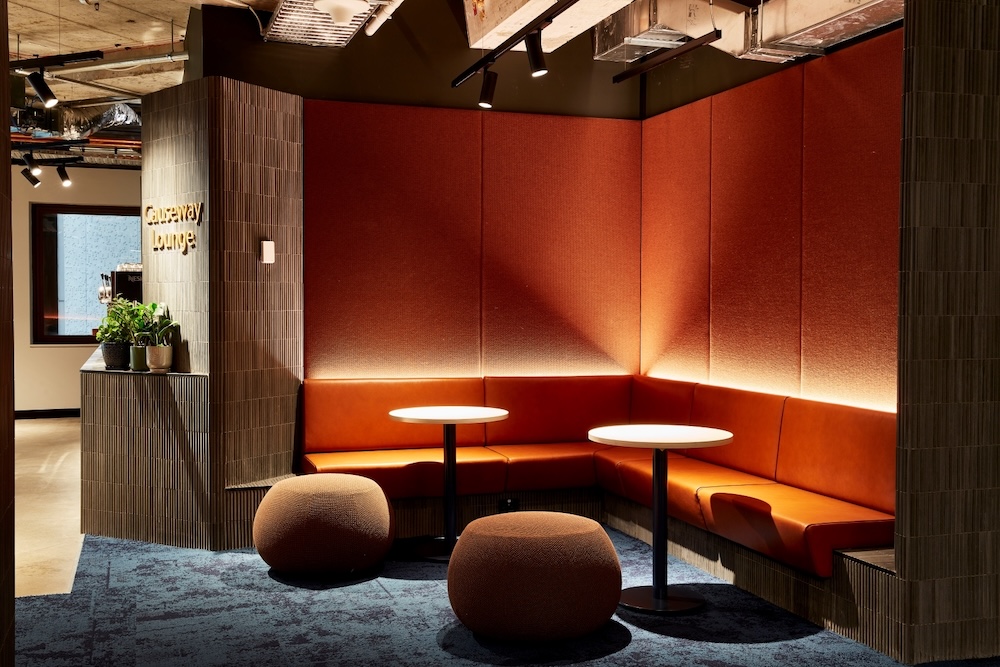
Communal lounge at The Work Project office
Unlike traditional office settings, shared office spaces for rent are intentionally designed to promote movement, spontaneity, and connection:
- Communal kitchens and lounges bring people together over coffee and conversation
- Flexible seating arrangements let teams shift between solo work and group tasks
- Onsite events and networking sessions foster cross-pollination of ideas between different industries and teams
For startups, project teams, or businesses in growth mode, coworking spaces also reduce the burden of long-term leases or costly fit-outs. You get access to world-class infrastructure — think high-speed internet, meeting rooms, and even concierge services — without the commitment or overhead.
Most importantly, these environments nurture a sense of shared energy. When you’re surrounded by ambitious people doing exciting work, it naturally pushes your own team to collaborate more intentionally and creatively.
Balance Collaboration with Concentration
Not all collaboration looks like a group huddle — sometimes it’s one person sketching out an idea alone before bringing it to the team. That’s why a modern office design layout must offer more than communal tables and open spaces. It must also give people room to think.
- Integrate quiet-focused zones into your layout to complement the collaborative ones:
- Acoustic panels and soft furnishings can help absorb sound, particularly in busy open-plan areas
- Private phone booths are perfect for confidential calls or solo brainstorming without distractions
- Quiet corners with comfortable seating can act as informal decompression zones — ideal for moments when your team needs to reset or work through complex problems individually
This balance isn’t just about productivity. It supports employee wellbeing by giving people control over their work environment. When team members can choose the setting that suits their focus or mood, they’re more likely to be engaged and less likely to burn out.
Create a Culture of Collaboration Through Space
Culture doesn’t live in a mission statement — it’s reflected in how people move, speak, and interact every day. And your office layout plays a powerful, if subtle, role in shaping those behaviours.
Think about what your space communicates without saying a word.
Are departments tucked away behind closed doors, or are teams positioned to see and engage with each other?
Are communal areas tucked into corners, or placed at the heart of the office?
Even spatial cues like where the leadership team sits can signal whether collaboration is encouraged or if hierarchy still dominates. When managers are physically (and symbolically) part of the shared environment, it fosters approachability and openness.
Inclusive, accessible layouts invite participation — not just from extroverted team members, but from everyone. When people see open sightlines, shared spaces, and tools that are easy to access and use, they’re more likely to contribute. No one wants to interrupt a closed-door meeting or walk a full floor just to write an idea on a whiteboard.
You’re essentially designing for psychological safety. When people feel seen, heard, and supported by the space around them, they’re more confident in voicing ideas, challenging assumptions, and working collectively toward solutions.
At its best, collaborative office design doesn’t just make teamwork possible — it makes it natural.
The Work Project: Where Space Sparks Collaboration
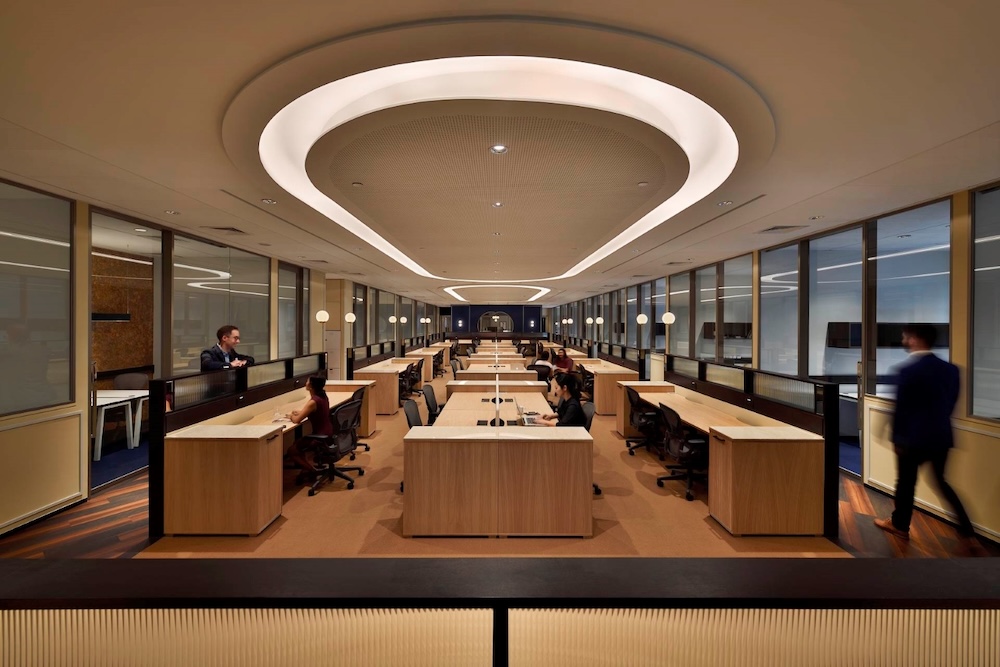
TWP office space that fosters collaboration
A truly collaborative team needs more than just good intentions — it needs the right space to thrive. At The Work Project, we design work environments that do more than look beautiful. They work hard behind the scenes to encourage interaction, spark creativity, and support every kind of workflow.
Whether you're after a vibrant coworking office or a private office space in Sydney that reflects your brand, our flexible layouts and thoughtfully curated amenities give your team room to move, meet, and make things happen.
Need a shared office space for rent that does more than house desks? Discover how The Work Project creates spaces where ideas flow, culture grows, and collaboration comes naturally.


